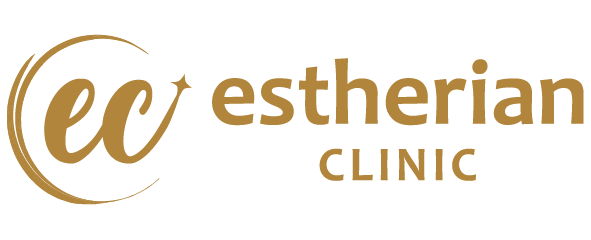Eyebrow transplant in Turkey is a revolutionary solution for individuals seeking to restore or enhance their eyebrows. Using advanced follicular unit extraction (FUE) techniques, skilled surgeons transplant hair follicles to create fuller, natural-looking brows. Known for its expertise and affordability, Turkey has become a top destination for eyebrow transplant procedures. Whether you want to correct thinning brows or achieve a bold, defined look, this procedure offers transformative results. Take the first step to your ideal brows today!
Causes of Eyebrow Hair Loss
Eyebrow hair loss can occur for many different reasons, ranging from temporary lifestyle factors to chronic medical conditions. Common causes include:
- Stress and lifestyle factors: High stress, lack of sleep, and unhealthy lifestyle habits can indirectly impact eyebrow health.
- Over-plucking and grooming habits: Continuous tweezing, waxing, or threading can damage the hair follicles, leading to thinning or patchy brows over time.
- Aging: Just like scalp hair, eyebrow hair can become thinner and sparser with age.
- Hormonal changes: Thyroid disorders, menopause, or other hormonal imbalances may contribute to eyebrow shedding.
- Medical conditions: Autoimmune diseases such as alopecia areata, skin conditions like eczema, psoriasis, or dermatitis, and even certain infections can affect eyebrow growth.
- Nutritional deficiencies: Lack of vitamins, minerals, and proteins (such as iron, biotin, or zinc) may weaken the follicles and cause hair loss.
- Trauma or injury: Burns, scars, or accidents that damage the skin can prevent hair from growing back in the affected area.
- Genetics: Some people naturally have sparse or thin eyebrows due to inherited traits.
Techniques of Eyebrow Transplant
Eyebrow transplant surgery is performed using advanced hair restoration methods that ensure natural-looking results while preserving the delicate appearance of the brows. The two most widely used techniques are FUE (Follicular Unit Extraction) and DHI (Direct Hair Implantation).
- FUE Method: In this technique, the surgeon carefully extracts individual hair follicles, usually from the back of the scalp, where the hair is most resistant to thinning. These follicles are then implanted into tiny incisions made along the natural eyebrow line. The surgeon pays close attention to the angle and direction of each graft to mimic natural eyebrow growth. FUE offers minimal scarring and a relatively quick recovery.
- DHI Method: This is a more precise variation of FUE. Using special implant pens (Choi pens), the surgeon can directly place each follicle without creating channels beforehand. This allows for better control of depth, angle, and density, making it especially effective for shaping delicate areas like the eyebrows. DHI often results in faster healing times and highly natural aesthetics.
Both techniques are performed under local anesthesia, ensuring that the patient remains comfortable throughout the procedure. The choice between FUE and DHI depends on the patient’s goals, hair characteristics, and the doctor’s recommendation.
The Eyebrow Transplant Process
Before The Surgery
The doctor ensures the patient is well-informed about the procedure, answering any questions and outlining expectations. The eyebrows are carefully designed to match the patient’s facial features, ensuring a natural and aesthetically pleasing outcome. Local anesthesia is administered, making the process painless, and the operation is completed in a single session. Patients must follow the surgeon’s preoperative instructions, as the sensitive nature of the eyebrow area demands extra care.
During The Procedure
The surgeon creates small incisions in the donor area and the transplant sites on the eyebrows. Hair follicles are extracted and implanted one by one, with meticulous attention given to the direction and angle of the follicles. This precision ensures that the newly transplanted hairs blend seamlessly with the natural eyebrow hair. The procedure itself takes around two to three hours.
After The Surgery
Patients can return to their daily routines within 48 hours. Some mild discomfort and light scabbing around the transplanted area are normal but resolve quickly. The transplanted hair typically sheds within three to five weeks, which is part of the natural growth cycle, and begins to regrow after two months. Strict adherence to the surgeon’s aftercare instructions is essential to achieve the desired results.
Benefits of an Eyebrow Transplant
An eyebrow transplant can be life-changing for patients who struggle with thin or absent brows. Beyond the aesthetic improvement, it brings several advantages:
- Natural and Permanent Results: Because your own hair follicles are used, the new brows grow naturally and continue to blend seamlessly with your facial features. Unlike makeup or microblading, the outcome is long-lasting.
- Improved Facial Balance: Eyebrows frame the eyes and define expressions. Restoring them enhances harmony in the face, making the eyes appear more vibrant and youthful.
- Customisation: The procedure allows for personalised design. Patients can choose the thickness, arch, and shape that best suits their features and preferences.
- Low Maintenance: Once healed, transplanted brows require little upkeep beyond normal grooming. There’s no need for daily filling in or frequent touch-ups.
- Boost in Self-Confidence: Fuller, natural eyebrows help patients feel more comfortable with their appearance, which can positively affect social interactions and self-esteem.
- Safe and Minimally Invasive: Since the surgery is performed under local anesthesia with refined techniques, it involves minimal discomfort and quick recovery compared to more invasive cosmetic surgeries.
Risks of Eyebrow Transplant
Like all cosmetic procedures, eyebrow transplantation carries some risks, though serious complications are rare when performed by an experienced surgeon. Patients should be aware of the following:
- Swelling and Redness: It’s common to experience mild swelling or redness around the brows in the first few days after surgery. These symptoms usually resolve quickly.
- Scabbing and Itching: Small scabs form where the grafts are placed. Picking at them can affect healing, so patients must let them fall off naturally.
- Infection: Though uncommon, any surgical procedure carries a risk of infection. Proper hygiene, following aftercare instructions, and taking prescribed antibiotics reduce this risk.
- Uneven Growth: Sometimes transplanted hairs may grow at slightly different angles or densities. This can often be corrected with trimming, touch-up procedures, or minor adjustments later on.
- Shock Loss: A temporary shedding of transplanted or surrounding hair may occur in the first few weeks. This is normal, and the follicles usually regrow within a few months.
- Scarring at the Donor Site: While modern techniques like FUE minimize scarring, tiny marks may still remain in the donor area. These are usually well-hidden within existing hair.
- Overgrowth or Mismatched Texture: Since donor hairs are often taken from the scalp, they may grow longer or thicker than natural eyebrow hairs. Regular trimming or grooming helps keep the brows looking natural.
Common Myths About Eyebrow Transplant
- Myth 1: Eyebrow transplants look fake.
Fact: When done by a skilled surgeon, eyebrow transplants use your own hair follicles, placed at natural angles and densities. The result looks authentic and blends seamlessly with your facial features.
- Myth 2: The results are immediate.
Fact: Like scalp hair transplants, transplanted eyebrow hairs shed within the first few weeks. New, permanent growth usually begins after 3–4 months, with full results visible around 9–12 months.
- Myth 3: Eyebrow transplants are only for women.
Fact: Men also undergo this procedure, often to restore density after scars, over-plucking, or naturally sparse brows. The surgery is highly customizable for masculine or feminine aesthetics.
- Myth 4: The procedure is extremely painful.
Fact: Eyebrow transplants are done under local anesthesia, so patients feel minimal discomfort during the operation. Mild soreness or tightness afterward usually subsides within a few days.
- Myth 5: The results don’t last.
Fact: Since the transplanted follicles are taken from areas resistant to hair loss (like the back of the scalp), they typically continue to grow permanently, offering long-lasting improvement.
FAQs
Who is an ideal candidate for an eyebrow transplant?
Anyone experiencing eyebrow thinning, hair loss, or irregular growth due to genetic factors, medical treatments, or aging can be a candidate. It is essential to be in good overall health and have realistic expectations about the results.
How to achieve natural and long-lasting results
Eyebrow transplant in Turkey is not only about restoring lost hair; it is about enhancing confidence and self-image. With proper care, the results are natural, permanent, and transformative. The expertly designed and transplanted eyebrows blend seamlessly with the patient’s face, creating a balanced and youthful appearance.
For further enhancement of your facial aesthetics, learn more about other procedures, such as eyelid surgery in Turkey, to complement your new look.
Does the procedure leave scars?
The use of advanced microsurgical tools minimizes the risk of visible scarring. Any minor marks left in the donor or transplant areas are usually imperceptible after healing.
How much downtime is required after the surgery?
Most patients resume their regular activities within 48 hours. However, strenuous activities, swimming, and direct sun exposure should be avoided for at least two weeks.
Can I choose the shape and thickness of my new eyebrows?
Yes, the surgeon collaborates with you to design a shape and thickness that best suits your face and aesthetic preferences. The goal is to achieve a natural and harmonious look.
Eyebrow Transplant in Turkey: Before and After
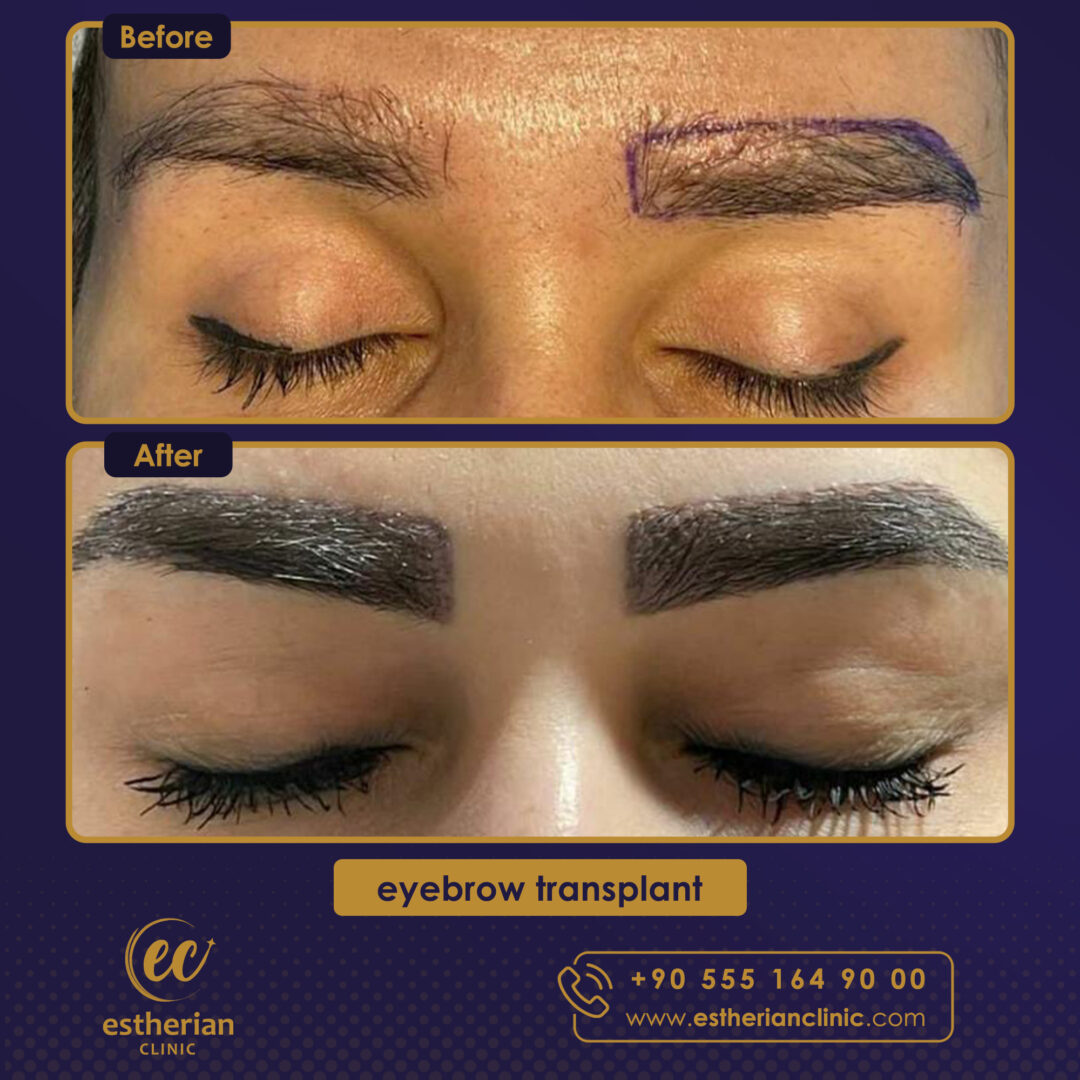
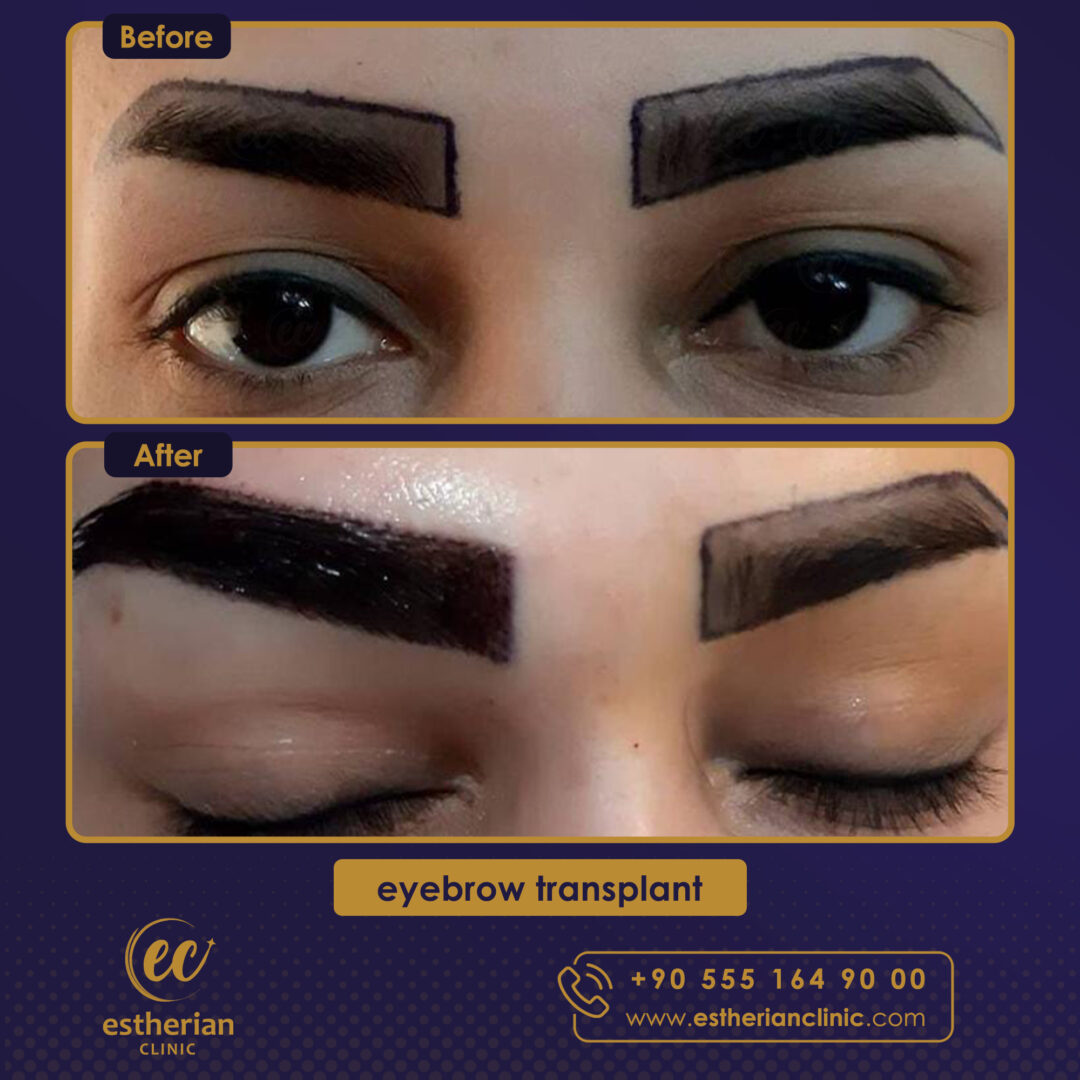
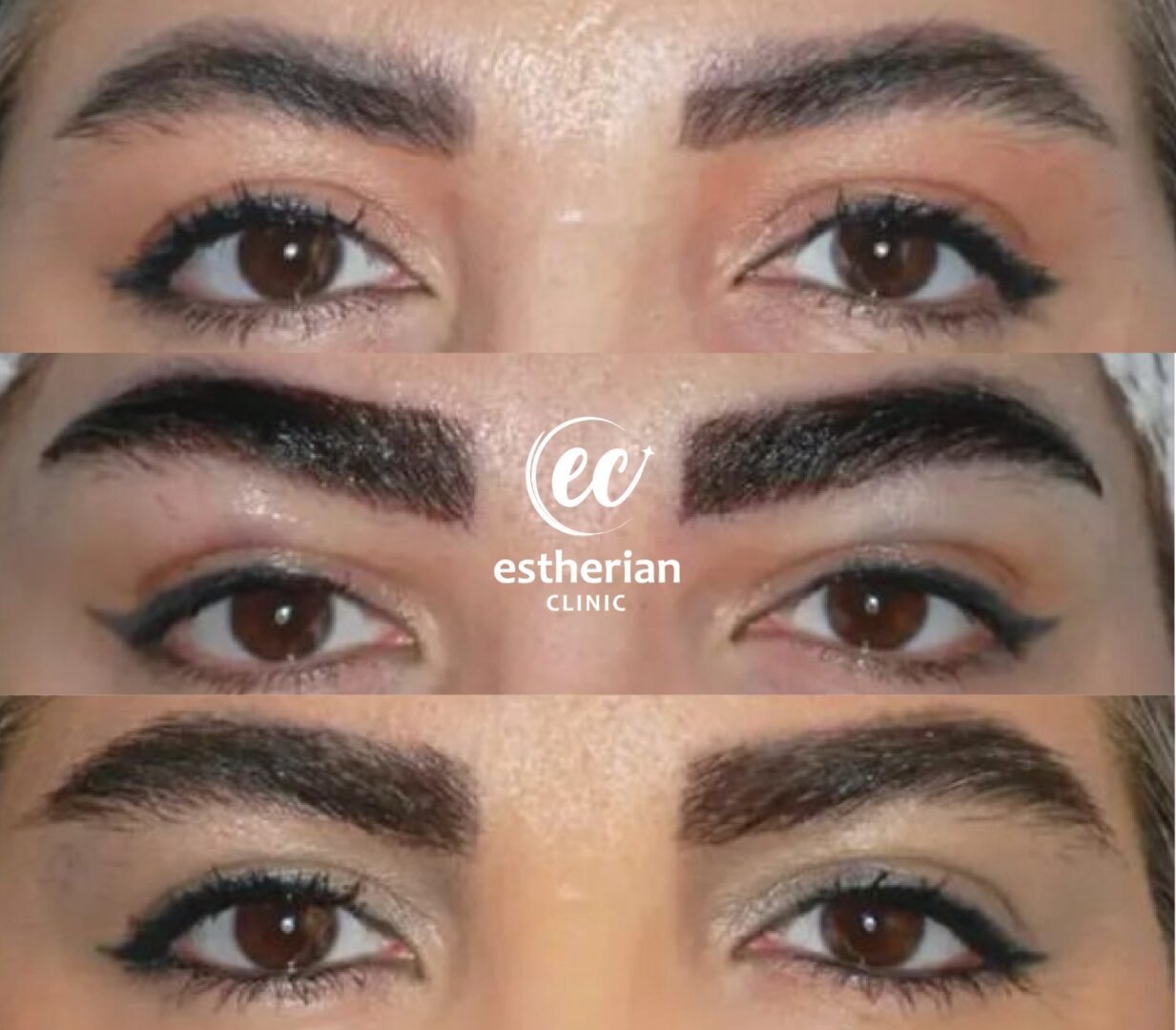
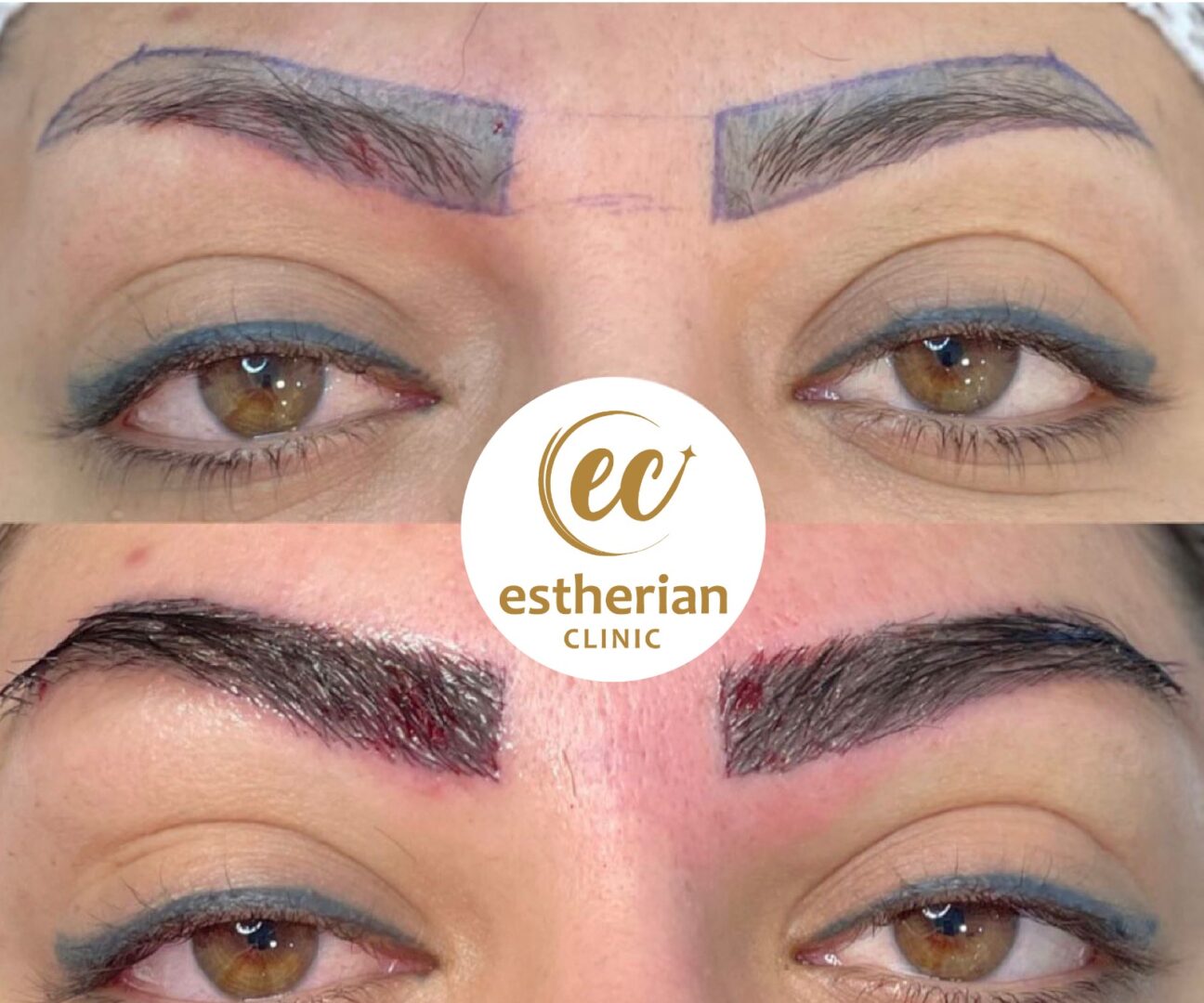
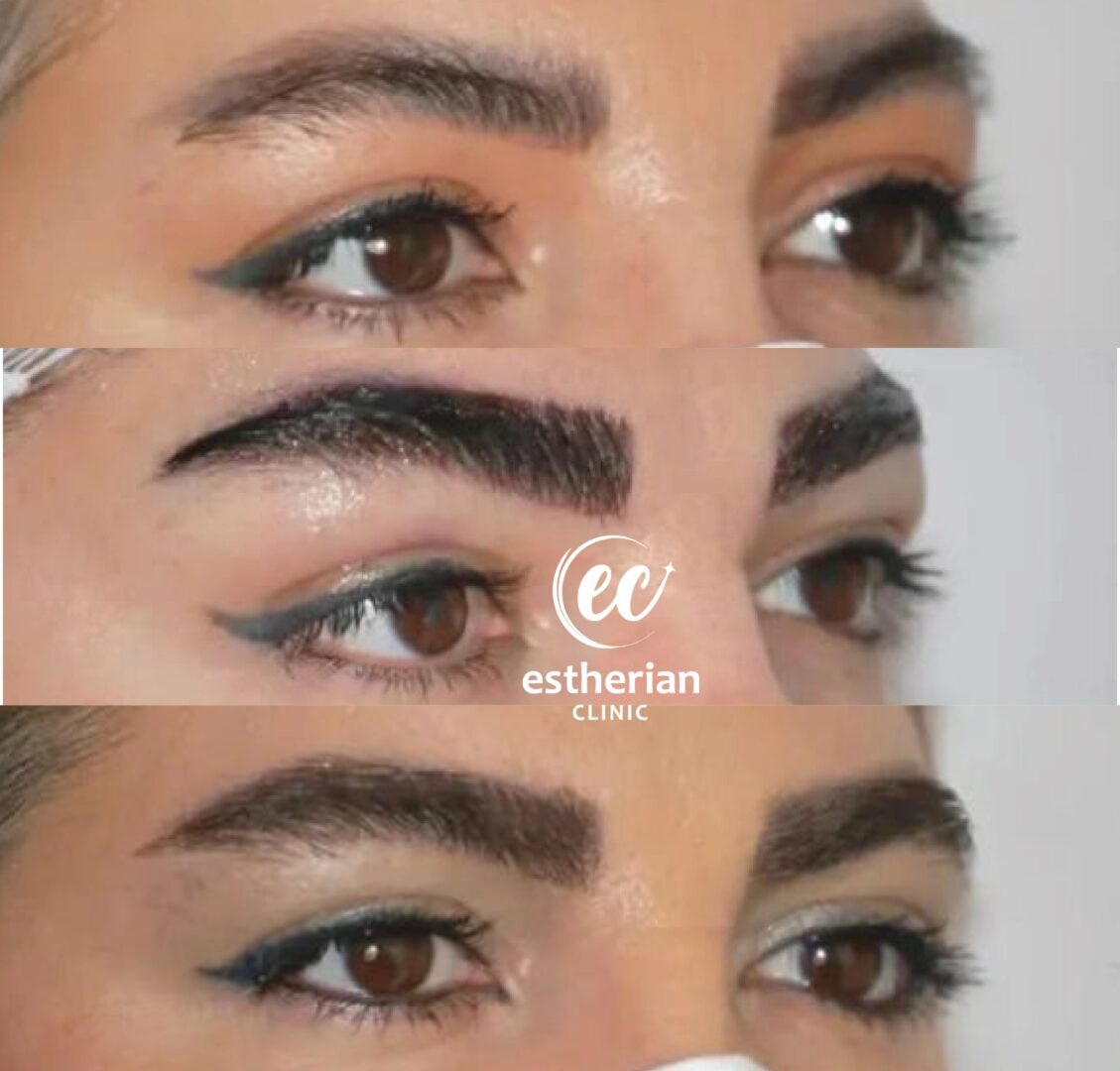
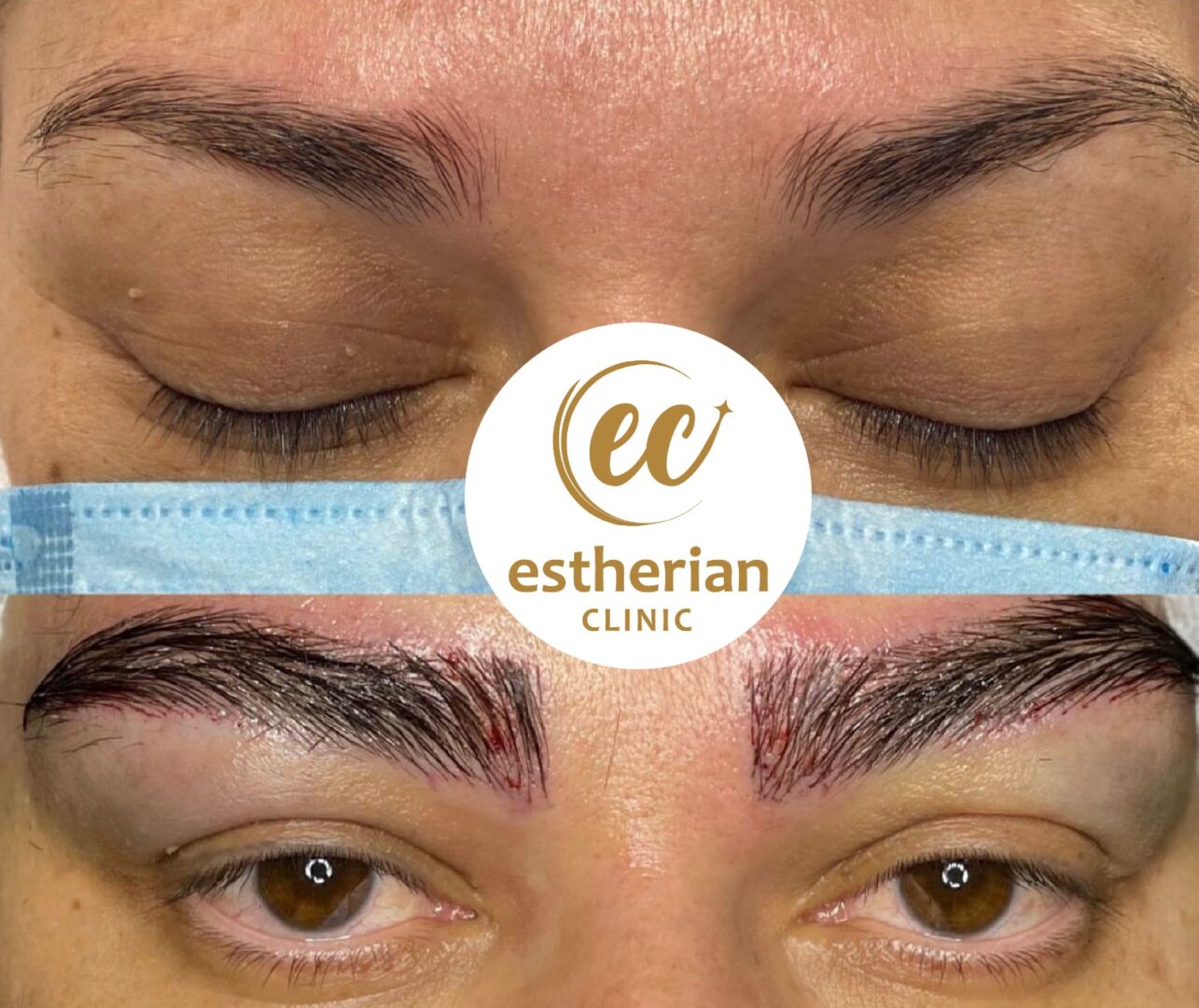
Related Articles About Eyebrow Transplant
realself.com: “Fuller eyebrows improve facial symmetry and frame the eyes beautifully.”
